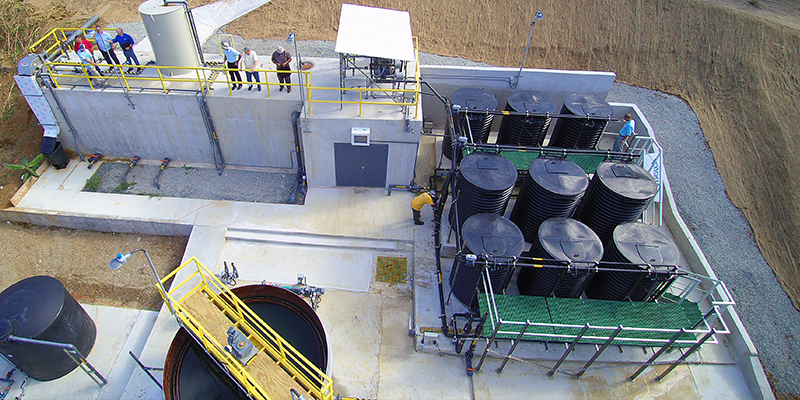What is Denitrification?
Published on by Trudi Schifter, CEO and Founder AquaSPE in Technology

In Fluence’s membrane aerated biofilm reactor (MABR) technology, simultaneous biological nitrification-denitrification takes place within a single tank due to a bacterial biofilm that forms on its aeration membrane.
Nitrates, which are vital to the growth of plants, must be removed during the wastewater treatment process
Nitrogen, the most prevalent element in Earth’s atmosphere at 78%, can be found in living organisms and decaying matter like humus in soil, as well as in the air we are breathing right now.
Nitrogen is considered a vital limiting nutrient, which means that in nature, it typically is the nutrient in shortest supply, so its supply regulates growth. On the negative side, an overabundance of nitrogen in water, called eutrophication, can cause toxic algal blooms that choke waterways and interfere with water treatment and desalination operations, and pose a threat to human health. Eutrophication can be caused by fertilizer runoff and sewage discharge, among other factors.
Even on its own, an overabundance of nitrogen in drinking water is toxic to humans, especially infants and pregnant women. It is a risk factor in methemoglobinemia, cancer, and diabetes.
Because of health and environmental dangers, denitrification is an important wastewater treatment because it converts a dangerous contaminant into a benign gas that can be discharged with no environmental impact.
Nitrogen and Water Quality
Many sources contribute to water’s nitrogen load, including wastes from food processing and chemical processes, but most of the nitrogen found in wastewater is from urea, a product of urine. Biological denitrification is often used to treat liquid wastes from industrial-scale agriculture, for instance, poultry farms.
In some areas of the United States nutrient-related pollution has adversely affected water quality, making denitrification essential. Across the state of Iowa, for instance, nitrates are such an ongoing threat to water quality that new wastewater treatment infrastructure is needed to fully address it. And, the city of Des Moines spent an additional $1.5 million on denitrification in 2015. Bill Stowe, chief executive officer and general manager of the Des Moines Water Works, told WaterOnline that he expects another $80 million to be spent on infrastructure upgrades, including for denitrification.
How Are Nitrates Removed?
There are three main approaches to nitrate removal: ion exchange and biological denitrification — the mostly widely used — as well as chemical reduction. According to the World Health Organization (WHO), ion exchange typically is used to treat groundwater, while surface water is commonly treated with biological denitrification.
- Ion exchange: In this chemical process, unwanted dissolved ions in water, such as nitrates from fertilizer, are exchanged for similarly charged ions as they pass over a bed of resin beads.
- Biological denitrification (activated sludge) process: Microbes do most of the work in biological denitrification. Commonly used bacteria that can use oxidized nitrogen — denitrifiers — include Pseudomonas, Alcaligenes, and Paracoccus. When they break down NO3 to metabolize oxygen, nitrogen gas is released.
- Chemical reduction: In these processes, chemicals such as acids are used as reducing agents to form ammonia or elemental nitrogen. These processes often require special conditions, such as the use of catalysts, or high heat and pressure.
Biological denitrification takes place after nitrification, another process carried out by bacteria. It’s the final step in the nitrogen cycle, a natural biological process by which nitrogen changes from one form to another.
Media
Taxonomy
- Activated Sludge
- Nitrogen